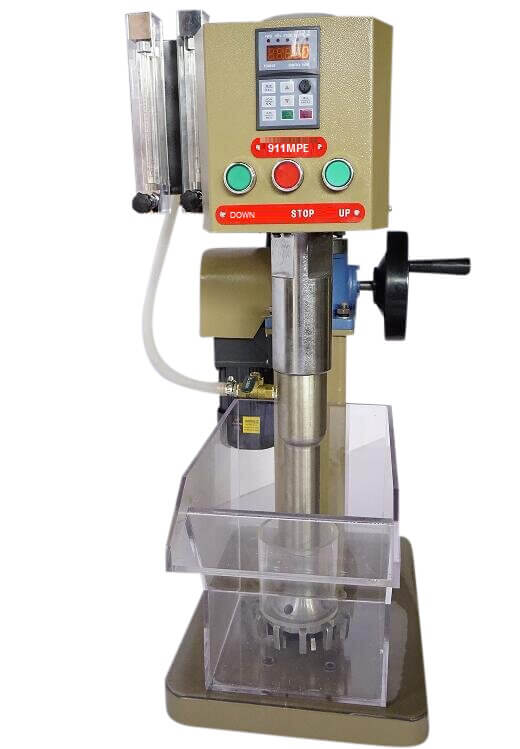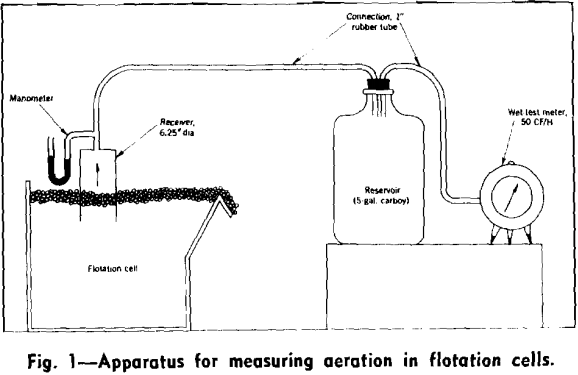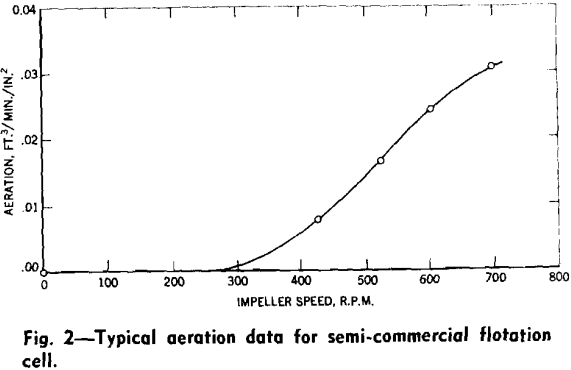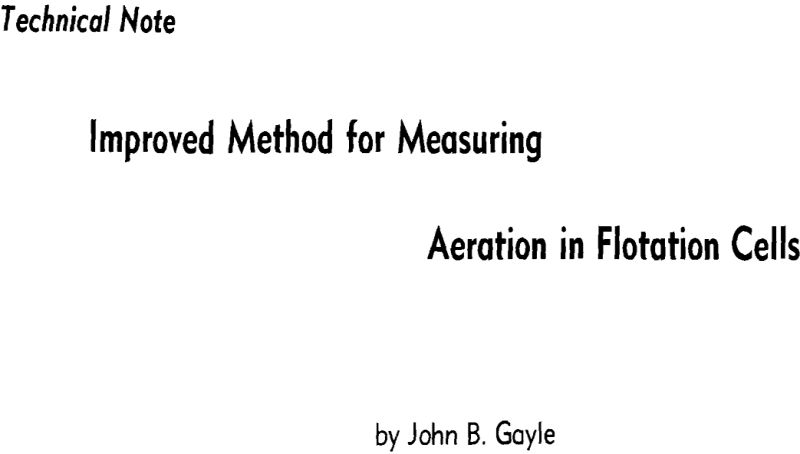 Present flotation processes depend almost entirely on the buoyant properties of air bubbles to effect separations of mineral and gangue, but there is no convenient method for measuring aeration in flotation cells. Consequently the relation between aeration and cell performance has not been definitely established.
Present flotation processes depend almost entirely on the buoyant properties of air bubbles to effect separations of mineral and gangue, but there is no convenient method for measuring aeration in flotation cells. Consequently the relation between aeration and cell performance has not been definitely established.
In connection with a comparative study of kerosene and froth flotation processes, a modification of the displacement method was developed in which air escaping from the cell surface is measured with a wet-test meter. The arrangement shown in Fig. 1 is satisfactory for use with a number of cells and is not critical, except that care must be taken to use connections and tubing large enough to avoid excessive back pressures. Attempts to use smaller tubing resulted in back pressures that caused displacement of the liquid level in the receiver, so that some air was lost around the sides, an occurrence readily visible when measurements were taken with only water passing through the cell. With the arrangement shown, the manometer indicated an average reading of about ½-in. water pressure. No loss of air was evident.
Fig. 2 presents typical data for a standard Denver sub-A 24×24-in. unit cell operated at impeller speeds from 0 to 710 rpm. Each plotted point represents the average for five readings distributed over the entire cell surface. Readings were taken with only water passing through the cell. Results of this type have been used in a study of the influence of operating variables on cell performance and in detecting inherent differences in the operating characteristics of cells of various kinds.
Although the information presented in Fig. 2 resulted only with water passing through the cell, the apparatus is suitable for use during flotation of coal when various reagents are present. Possible modifications that might prove convenient under special circumstances include varying the size and shape of the receiver and substituting a calibrated, inverted, water-filled carboy or other gas-measuring device for the wet-test meter. If such modifications result in excessive back pressures, some form of draft should be applied at the discharge end of the measuring system.


https://www.911metallurgist.com/equipment/flotation/

